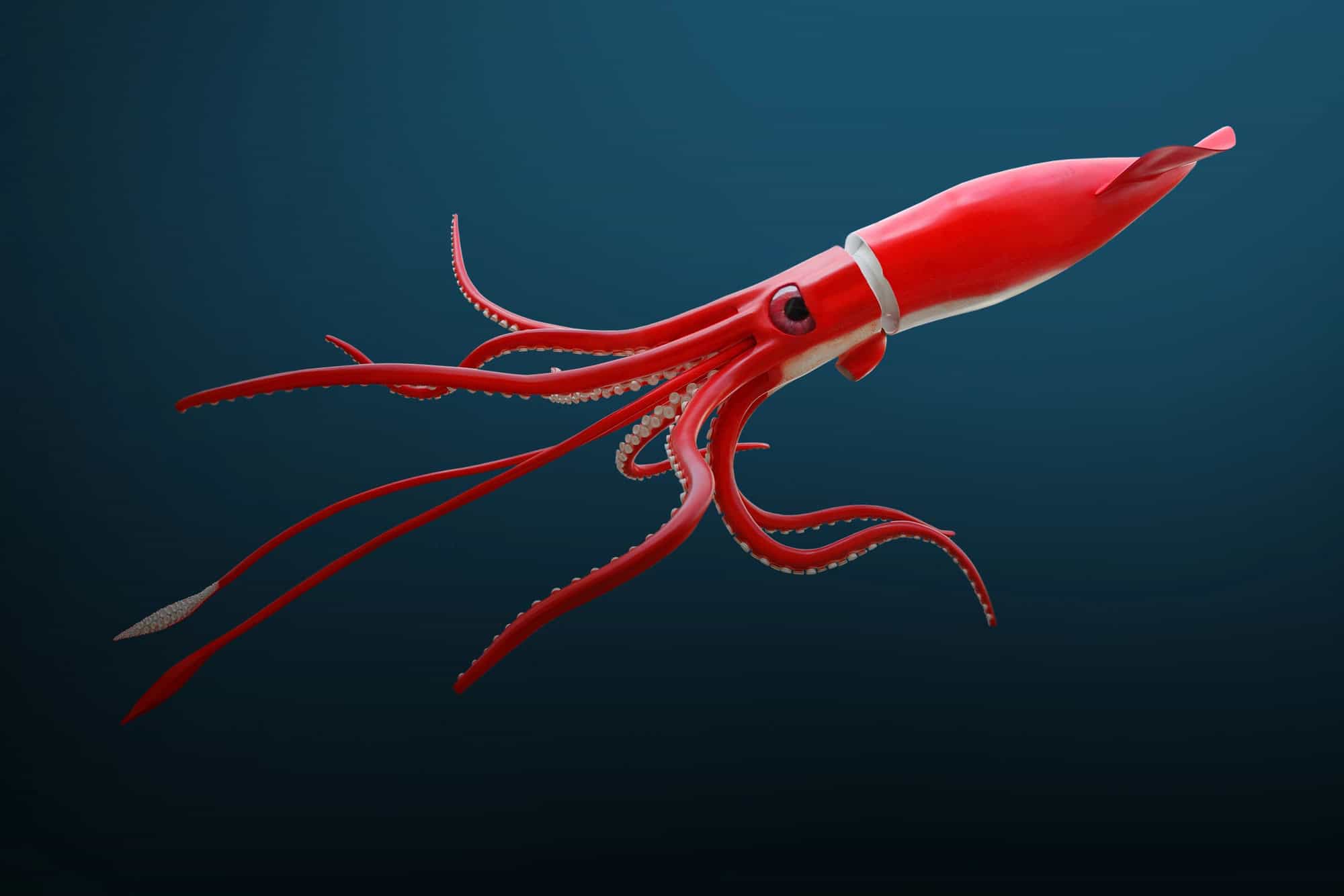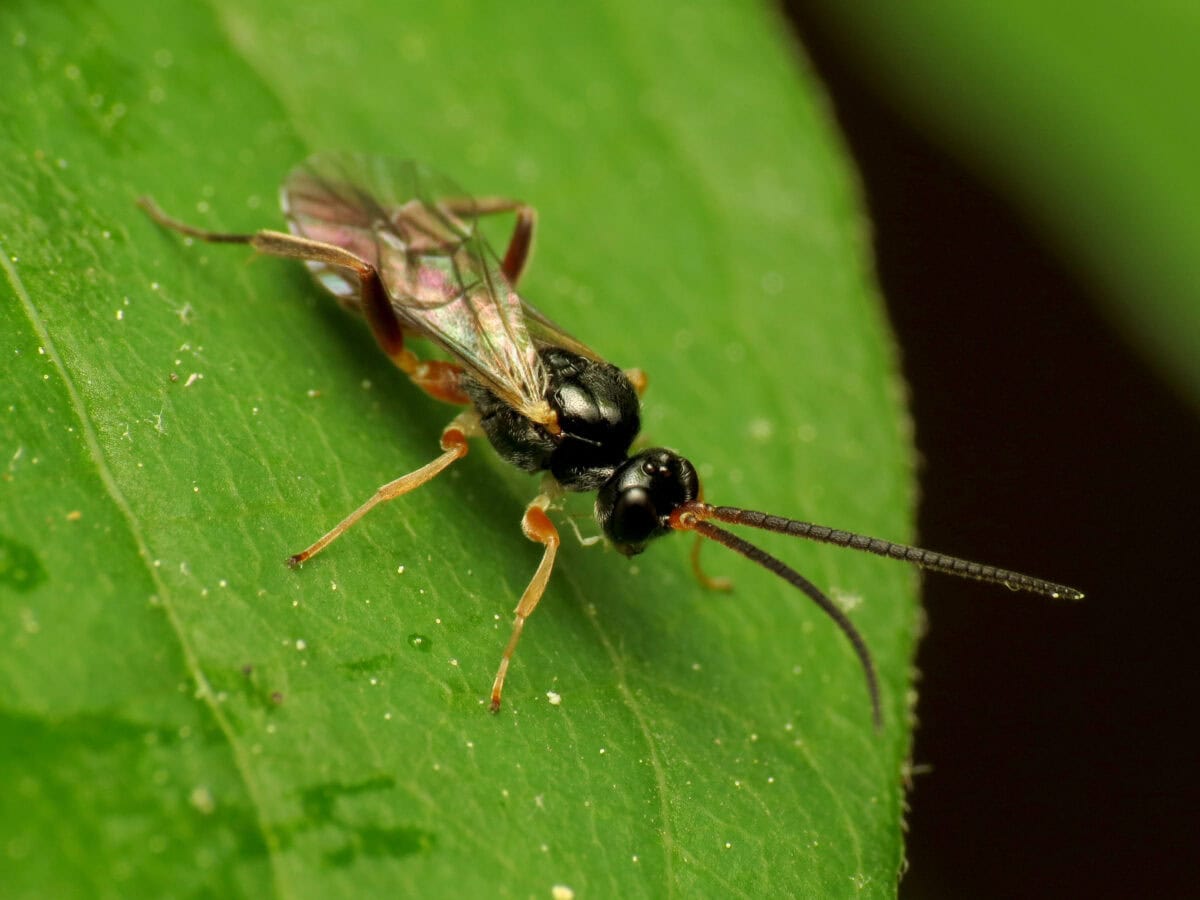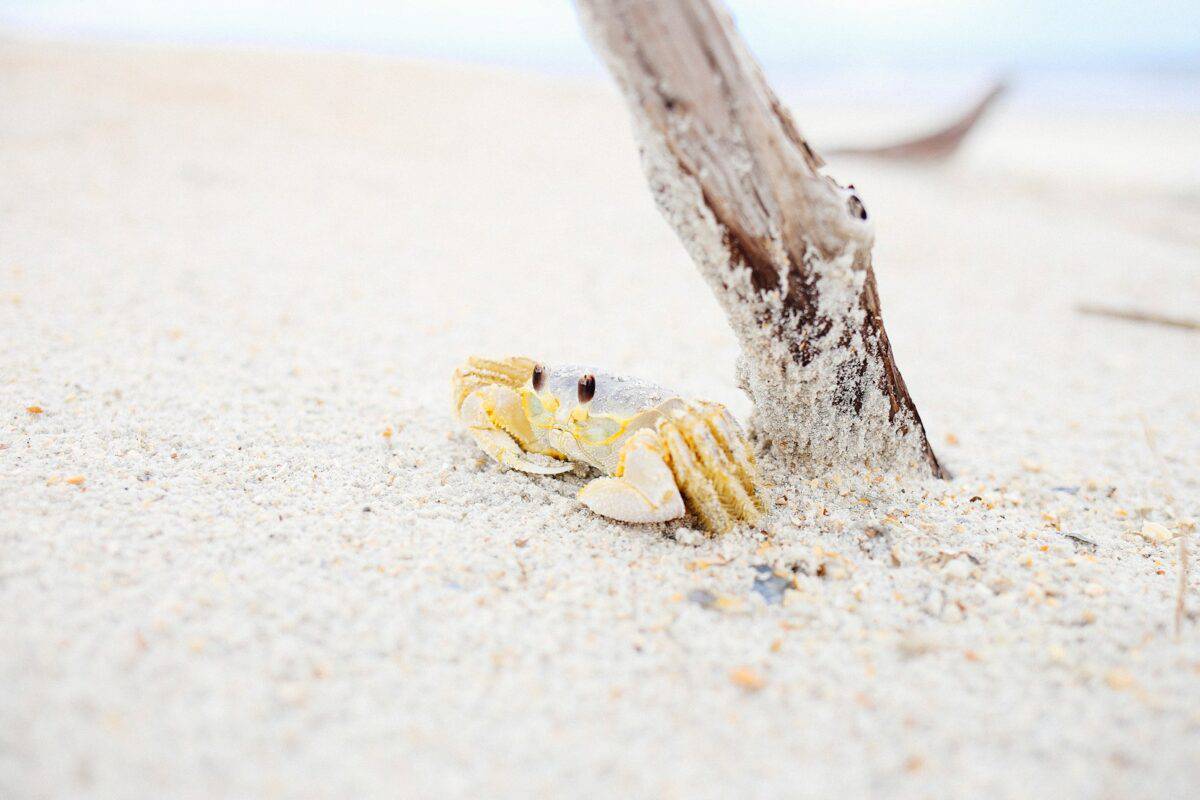The absence of light might seem inhospitable to life, yet numerous fascinating creatures have evolved to thrive in perpetual darkness. From the deepest ocean trenches to lightless cave systems and even inside other organisms, these remarkable animals have developed extraordinary adaptations that allow them to navigate, hunt, mate, and survive without ever seeing the sun. Their specialized sensory systems, unique metabolic processes, and sometimes bizarre appearances reveal nature’s incredible ability to adapt to extreme environments. In this exploration of darkness-dwelling creatures, we’ll discover 15 animals that have mastered life in environments where light never penetrates, showcasing the remarkable diversity and resilience of life on our planet.
12. Olm (Proteus anguinus)

The olm, sometimes called the “human fish” due to its pinkish, flesh-colored skin, is one of the most iconic cave-dwelling animals in the world. This aquatic salamander lives exclusively in the underwater cave systems of the Dinaric Alps in Southern Europe, primarily in Slovenia and Croatia. Having evolved in darkness for millions of years, olm have lost their need for eyes—while they develop eye primordia as embryos, these structures later regress, leaving adults with skin-covered vestigial eyes incapable of forming images. Instead, olms rely on highly developed senses of smell and hearing, along with sensory receptors that can detect electric fields and vibrations in water.
Perhaps most remarkable is the olm’s extraordinary lifespan and metabolism. These animals can live up to 100 years and can survive without food for an astonishing decade by reducing their activity and metabolic rate. Their neotenic development means they retain larval characteristics throughout their lives, including external gills and an aquatic lifestyle, while developing functioning reproductive organs. The olm’s extreme specialization for cave life makes it highly vulnerable to environmental changes, earning it protected status throughout its range.
11. Mexican Blind Cavefish (Astyanax mexicanus)

The Mexican blind cavefish offers one of the most compelling examples of evolution in action. Remarkably, this species exists in two forms: a surface-dwelling form with functional eyes and pigmentation, and cave-dwelling populations that have lost both these features. These different populations of the same species provide scientists with a rare opportunity to study evolutionary adaptation in real time. The cave form has undergone regressive evolution, where features unnecessary in darkness are lost while other senses are enhanced.
Without functional eyes, blind cavefish have developed an impressive array of compensatory adaptations. They possess an enlarged lateral line system with numerous sensory neuromasts that detect changes in water pressure and movement. They’ve also developed a form of echo-location by creating pressure waves with their mouths and sensing the reflections. Additionally, these fish have more taste buds than their surface counterparts and can detect chemical signals in water with extraordinary sensitivity. Their unique ability to thrive in nutrient-poor cave environments also involves metabolic adaptations, including insulin resistance that allows them to store and use energy more efficiently during periods of food scarcity.
10. Giant Squid (Architeuthis dux)

The legendary giant squid inhabits the lightless depths of the world’s oceans, typically at depths between 300-1,000 meters (980-3,280 feet) where sunlight cannot penetrate. These mysterious cephalopods are among the largest invertebrates on Earth, with bodies that can reach lengths of up to 13 meters (43 feet) for females. Despite their massive size, giant squids remained largely undocumented in their natural habitat until 2004, when the first live specimen was photographed, followed by video footage in 2012—testament to their deep-dwelling, elusive nature.
In the perpetual darkness of the deep sea, giant squids have evolved the largest eyes in the animal kingdom, measuring up to 27 centimeters (10.6 inches) in diameter. These enormous eyes collect whatever minimal light may be present, primarily bioluminescence from other deep-sea creatures, giving them a crucial advantage in detecting prey and predators. Their nervous system has also adapted for life in darkness, with a complex brain and sophisticated control over chromatophores—specialized cells that allow them to change color for communication and camouflage, even in an environment where these visual signals might only be visible during brief bioluminescent flashes. Additionally, they possess sensitive mechanoreceptors throughout their bodies and arms that detect water movement, enabling them to sense approaching creatures in the darkness.
9. Texas Blind Salamander (Eurycea rathbuni)

The ghostly Texas blind salamander is a striking example of a troglobite—an animal that lives exclusively in caves. Endemic to the Edwards Aquifer in San Marcos, Texas, this rare amphibian has evolved spectacular adaptations for its lightless underground habitat. Most noticeable are its lack of eyes, which have regressed to tiny black dots beneath a layer of skin, and its lack of pigmentation, resulting in a translucent pinkish-white body through which blood vessels and some internal organs are visible.
Without vision, the Texas blind salamander has developed heightened alternative senses that allow it to thrive in darkness. Its flattened, shovel-shaped head contains numerous sensory papillae that detect changes in water pressure and movement. The salamander uses these to locate prey—primarily small crustaceans and snails—by sensing their movements in the water. It also possesses a keen chemical sense that helps it detect food sources. Despite living in a relatively stable environment with few predators, the Texas blind salamander faces significant threats from groundwater pollution and habitat degradation, making it critically endangered. Its existence is entirely dependent on the quality and stability of the Edwards Aquifer ecosystem, highlighting the fragility of specialized cave-dwelling species.
8. Kaua’i Cave Wolf Spider (Adelocosa anops)

The Kaua’i cave wolf spider, discovered only in 1971, is a remarkable example of island cave evolution. Found exclusively in a small system of lava tubes on the Hawaiian island of Kaua’i, this critically endangered arachnid has evolved specifically for its subterranean environment. Unlike most spiders that have eight eyes, this species has completely lost its eyes through evolutionary adaptation to perpetual darkness. Its body has also lost all pigmentation, resulting in a pale, amber-colored appearance.
What makes this spider particularly fascinating is how it has modified its hunting strategy for life in the darkness. While most wolf spiders are visual hunters that chase down prey, the Kaua’i cave wolf spider has become a stealthy ambush predator. It uses sensitive hairs (setae) on its legs and body to detect vibrations and air movements, allowing it to pinpoint prey without sight. Even more remarkable is its primary food source—the equally rare Kaua’i cave amphipod, another eyeless creature that shares its habitat. With a total population estimated at fewer than 100 individuals, the Kaua’i cave wolf spider represents one of the rarest animals adapted to life in darkness, and its continued existence remains precarious due to habitat disturbance, introduced species, and pesticide use in nearby agricultural areas.
7. Chambered Nautilus (Nautilus pompilius)

The chambered nautilus, often called a “living fossil” because it has remained largely unchanged for 500 million years, spends most of its life in the dark depths of the ocean. During the day, these remarkable cephalopods typically inhabit depths of 300-600 meters (980-1,970 feet) where sunlight barely penetrates, ascending to shallower waters only at night to feed. Unlike their coleoid relatives (squids and octopuses) that evolved more complex eyes, the nautilus retains a primitive pinhole eye without a lens, more similar to the eyes of prehistoric cephalopods.
Despite having relatively simple eyes, the nautilus has adapted these organs specifically for detecting light in dim conditions. Their eyes contain a pigmented retina that is exceptionally sensitive to light, allowing them to distinguish between light and shadow—sufficient for navigation and predator avoidance in their deep-water environment. However, what truly enables their survival in darkness is their highly developed sense of smell. The nautilus possesses up to 90 thin tentacles (unlike the 8-10 arms of octopuses and squids) that bear chemoreceptors, allowing them to track prey by scent rather than sight. They follow chemical trails through the water to locate dead animals, their primary food source. Their distinctive spiral shell, divided into chambers filled with gas, also plays a crucial role in their deep-water lifestyle, providing precise buoyancy control that allows them to move vertically through the water column with minimal energy expenditure—an important adaptation for an environment where food resources can be scarce.
6. Hadal Snailfish (Pseudoliparis swirei)

The hadal snailfish holds the remarkable distinction of being the deepest-living fish ever discovered, thriving at depths of up to 8,178 meters (26,831 feet) in the Mariana Trench. At these extreme depths, not only is there complete darkness, but also crushing pressure more than 800 times that at sea level. First documented in 2014 and formally described in 2017, this small, translucent fish represents one of the most extreme adaptations to life without light in the animal kingdom.
The hadal snailfish has evolved extraordinary physiological adaptations to survive in its extreme environment. Its body contains high levels of trimethylamine oxide (TMAO), a chemical that prevents proteins from being crushed under pressure. Unlike many deep-sea creatures that have enlarged eyes to capture minimal light, the hadal snailfish has relatively small eyes, suggesting vision plays a limited role in its lifestyle. Instead, it relies heavily on a well-developed lateral line system and sensory pores that detect vibrations and movements in the water. Its diet consists primarily of small crustaceans that fall from shallower waters or live on the seafloor, which it locates through these non-visual sensory systems. Remarkably, despite living under such extreme conditions, the hadal snailfish appears relatively active and successful in its unique ecological niche, demonstrating that life can adapt to even the most challenging environments on Earth.
5. Guiana Dolphin (Sotalia guianensis)

While not living in complete darkness all the time, the Guiana dolphin represents a fascinating example of an animal that has evolved to “see” without light when necessary. These coastal dolphins inhabit murky, turbid waters along the eastern coasts of Central and South America, where visibility is often severely limited. What makes them extraordinary is their recent discovery as the first non-platypus mammal known to possess electroreception—the ability to sense electric fields.
The Guiana dolphin has specialized sensory pits on its rostrum (snout) called vibrissal crypts, which contain electroreceptors capable of detecting the minuscule electric fields generated by the muscle movements of prey fish. This adaptation allows them to effectively “see” fish hidden in muddy water or buried in sediment where visual hunting would be impossible. When hunting in dark or murky conditions, these dolphins complement their echolocation abilities with electroreception, giving them multiple non-visual ways to locate prey. This multi-sensory approach demonstrates how even larger, complex mammals can adapt to function effectively in conditions of limited visibility. The discovery of electroreception in these dolphins also highlights how adaptations to darkness can evolve independently in different animal lineages facing similar environmental challenges.
4. Parasitic Wasp (Megaphragma mymaripenne)

Among the most extraordinary adaptations to life in darkness belongs to the parasitic wasp Megaphragma mymaripenne, one of the smallest insects in the world at just 200 micrometers long—smaller than some single-celled organisms. These tiny wasps spend their developmental stages in complete darkness as they grow inside the eggs of thrips (small insects). What makes them remarkable is not just their diminutive size but their extraordinary nervous system adaptation for life in darkness.
Scientists discovered that adult M. mymaripenne wasps function with only 7,400 neurons—the smallest number of neurons of any flying insect and far fewer than most insects of comparable size. Even more astonishingly, 95% of these neurons lack nuclei. During metamorphosis, the wasp eliminates the nuclei from most of its nerve cells, essentially operating with “zombie neurons” that continue functioning without cell nuclei. This extreme adaptation allows the wasp to maintain essential neural functions while drastically reducing its body size and energy requirements—crucial adaptations for an organism that develops in the confined, lightless space of another insect’s egg. Despite their minuscule nervous system, these wasps can still fly, locate host eggs using chemical cues, and reproduce successfully, demonstrating that complex behaviors don’t always require complex neural architecture, especially when adapted to specialized dark environments.
3. Bone-Eating Worms (Osedax species)

Bone-eating worms of the genus Osedax represent one of the most bizarre and specialized adaptations to darkness-dwelling life. Discovered only in 2002, these marine worms colonize the skeletons of dead whales and other large vertebrates that sink to the ocean floor, where sunlight never penetrates. What makes Osedax particularly strange is its remarkable sexual dimorphism and feeding method. Females grow to several centimeters long and embed themselves into bones, while males are microscopic and live as “harems” inside the female’s body, sometimes hundreds of males living inside a single female.
Without eyes or a conventional digestive system, these worms have evolved an extraordinary way to extract nutrients in their lightless habitat. Females develop elaborate root-like structures that penetrate bone tissue, where they house symbiotic bacteria that digest bone collagen and fats, providing nutrients the worm can absorb. This symbiotic relationship allows Osedax to exploit a food source inaccessible to most other deep-sea animals. Different Osedax species have specialized for different bone types and decomposition stages, with some preferring whale vertebrae while others target denser limb bones. Their rapid colonization abilities suggest they can detect sunken carcasses from considerable distances using chemical sensing, and their reproductive strategy—releasing eggs that develop into larvae capable of dispersing over long distances—enables them to find widely scattered food sources in the vast darkness of the deep sea.
2. Star-Nosed Mole (Condylura cristata)

The star-nosed mole might be the most peculiar-looking mammal adapted for life in darkness. Native to wetlands and moist soils of northeastern North America, this small insectivore spends nearly its entire life underground in complete darkness. Its most distinctive feature is the circle of 22 fleshy, mobile tentacles arranged in a star pattern around its nostrils. This bizarre nasal structure isn’t just unusual—it represents perhaps the most sensitive touch organ in the animal kingdom, containing more than 100,000 nerve fibers packed with mechanoreceptors.
The star-nosed mole’s sensory capabilities are nothing short of extraordinary. Its star appendages can touch up to 12 different objects per second, allowing it to identify and consume small prey faster than the human eye can follow, often in less than a quarter of a second from detection to consumption. The central pair of tentacles is particularly sensitive, functioning like a high-resolution tactile fovea similar to the visual fovea in human eyes. In addition to touch, the star contains specialized Eimer’s organs that may provide electroreceptive capabilities, potentially allowing these moles to detect the electrical fields of prey animals. Though they possess small eyes, these provide minimal functionality, as the mole relies almost exclusively on its remarkable tactile system to navigate and hunt in its underground world. The star-nosed mole demonstrates how evolutionary pressures in lightless environments can produce sensory systems that, in some ways, exceed the capabilities of vision.
1. Yeti Crab (Kiwa hirsuta)

Discovered in 2005 near hydrothermal vents in the South Pacific Ocean, the yeti crab lives in one of Earth’s most extreme dark environments. Dwelling at depths of approximately 2,200 meters (7,200 feet), this crustacean inhabits a world of perpetual darkness punctuated only by the glow of superheated water erupting from seafloor vents. Its most distinctive feature is the dense covering of specialized setae (hair-like structures) on its arms, giving it the “yeti” nickname and serving a crucial function in its adaptation to darkness.
Conclusion:

In the lightless corners of our planet—deep oceans, subterranean caves, and murky waters—life has not only persisted but flourished in extraordinary ways. The 15 animals highlighted in this article showcase a stunning array of evolutionary innovations that allow survival in complete darkness. From the echolocation of blind cavefish to the electroreception of dolphins and the bizarre bone-feeding strategies of Osedax worms, each species reveals nature’s astonishing flexibility and resilience. These adaptations underscore an essential truth about life on Earth: even in the most extreme and inhospitable environments, evolution finds a way. By studying these darkness-dwelling creatures, we not only gain insight into the adaptability of life but also broaden our understanding of what may be possible in similarly harsh environments elsewhere in the universe.
- The Most Dangerous Lightning Strikes Ever Witnessed in the US - August 11, 2025
- The Most Destructive Floods in US History - August 11, 2025
- 12 Animals That Create and Use Their Own Light - August 11, 2025

